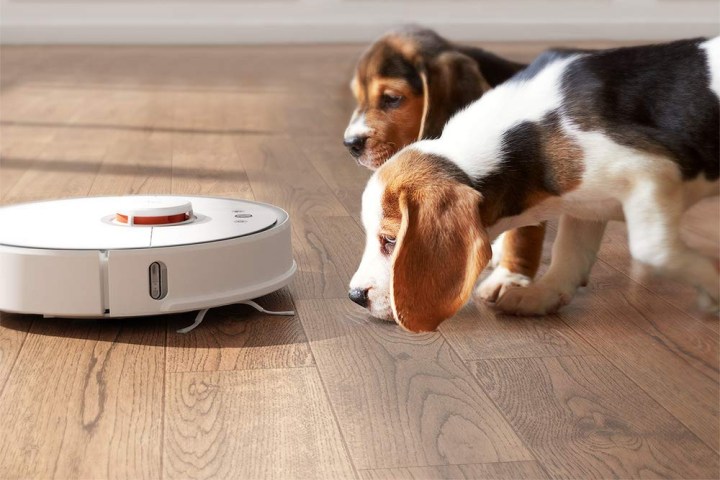Vacuum bots like the Roomba have become a common sight in homes of all kinds — but they have a cousin, a lesser-known robot cleaner with a different purpose. These smart mop robots clean hardwood surfaces with a cleaning spray mixture and pads. While they don’t handle debris, they are designed for hardwoods, vinyl, and other materials you would otherwise clean with a mop.
You can find these robot mops from the same brands that produce the vacs, including iRobot, Ecovacs, and Bissell. Sometimes they are even bundled together in one package to accommodate different types of flooring in the same house. But are the mop bots really worth it? Let’s go over the pros and cons before you buy.
Pros of a robot mop

They’re just as smart as the vac versions: These vacs are packed with sensors and offer many app control options for various cleaning patterns and setting schedules. With tech like iRobot’s vSLAM navigation, they’re smart enough to navigate around furniture and toys, and many can head back to their charging station and recharge when their battery grows low.
They are adaptable across many materials: Mop bots tend to have several different settings for how much spray they use. That’s a useful feature if you have a floor that can benefit from a little spray (like various hardwoods and bamboos) but you’re worried about too much moisture causing damage.
They are good at getting hard-to-reach spots: When using a manual mop, it can be difficult to get all the way under tables and around obstacles. Robot mops don’t really have that problem. They are also programmed to get as close to floorboards as they can so they don’t miss walls or corners.
They can boost the cleaning with the right modes: Handy modes include spot cleaning for light spills, and extra-tough cleaning modes that go slower and use harder oscillation to deal with more serious cleaning projects.
You can find hybrid models: Many mop robots are hybrid models that can switch between mopping and vacuuming, which can be a way to save money while getting some benefits of both.
Cons of a robot mop

They require more maintenance: Robot vacs are easy to care for — especially when they return for charging. Simply empty them from time to time — some models can even do that automatically. Smart robot mops are different: They use cleaning pads that must be replaced and/or washed, and reservoirs of specialized cleaner that you need to refill regularly.
They can’t take care of big spills: These mop vacs only have a limited pad surface area, which isn’t designed for much absorption. If it’s not a small spill, the bot probably won’t be able to deal with it, so you’ll need to reach for a rag or mop instead.
They have limited capacity: In larger areas, robot mops can run out of cleaner quickly and will need to be refilled. After refilling the bot three times for a single open-area room, you may start getting tired.
They don’t handle grout lines well: Grout lines are usually too deep for a robot mop to reach, so they will still grow dirty over time. You will have to clean these manually for the best results.
Price can be an issue: Robot mops, like robot vacuums, can quickly become expensive, and models often range beyond $200 — or much more. The mops also have some extra ongoing costs that vacs don’t, like replacing pads and cleaner fluid. A pack of new pads is generally around $10 to $20, for example, while a new bottle of cleaner is around $20.
Common robot vacuum mop FAQs

Are robot vacuum mops really worth it?
For moderately-sized hardwood or groutless flooring, robot mops can help keep the floor dust-free and looking good. They also cut down on the number of times that you will need to mop. However, they can’t handle older stains or dirt build-up that take serious scrubbing to remove, and they are limited at tackling spills. That said, there are enough advantages to seriously consider one if you have significant amounts of hard flooring, but they probably aren’t worth it at the same price as robot vacs, so look for deals or moderately-priced models.
How many years do robot vacuum mops last?
You’ll have to replace the mop pads at intervals, typically every several months or so. The bot itself will last significantly longer, usually up to six years if well-cared for — and if they don’t fall down any stairs.
How often should you use robot vacuum mops?
Much like robot lawnmowers, robot vacs and mops are designed to work frequently in a maintenance-oriented role. They take care of daily dust and light debris, not large dust bunnies or caked-over spills. Run robot mops once a day or every other day for the best results.



